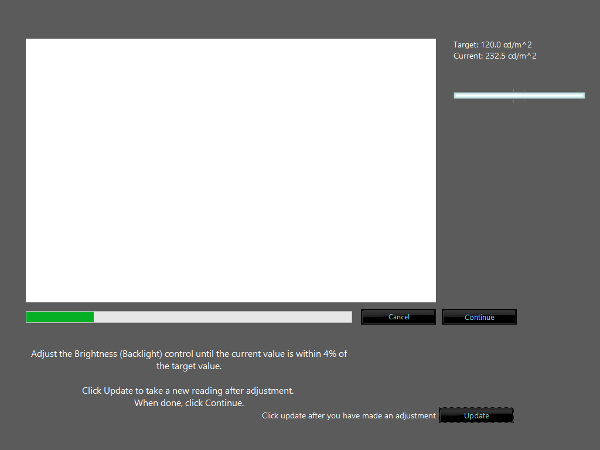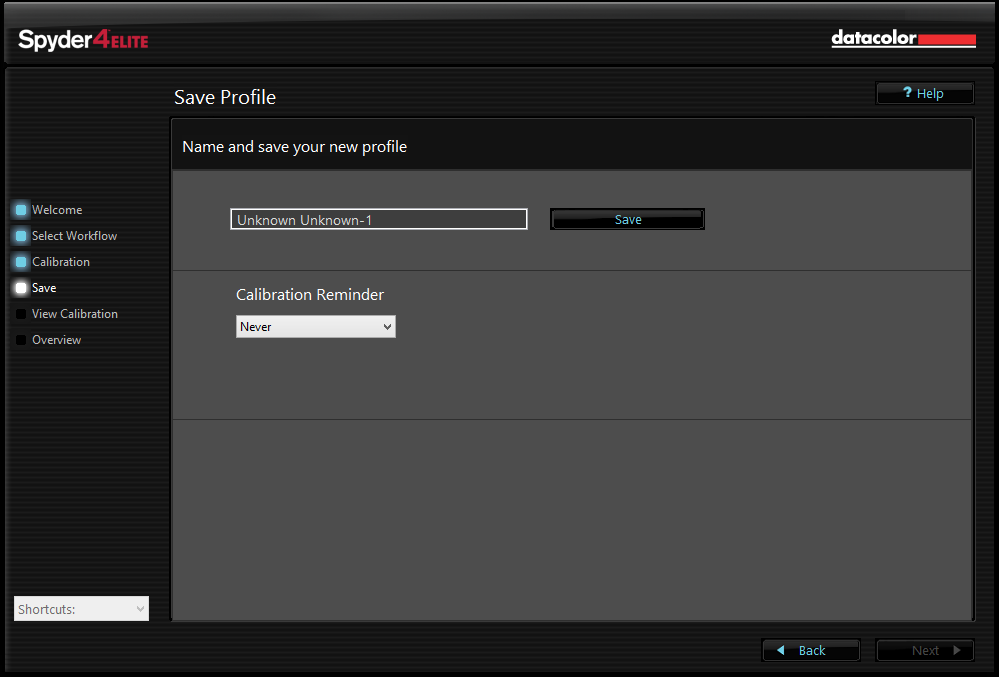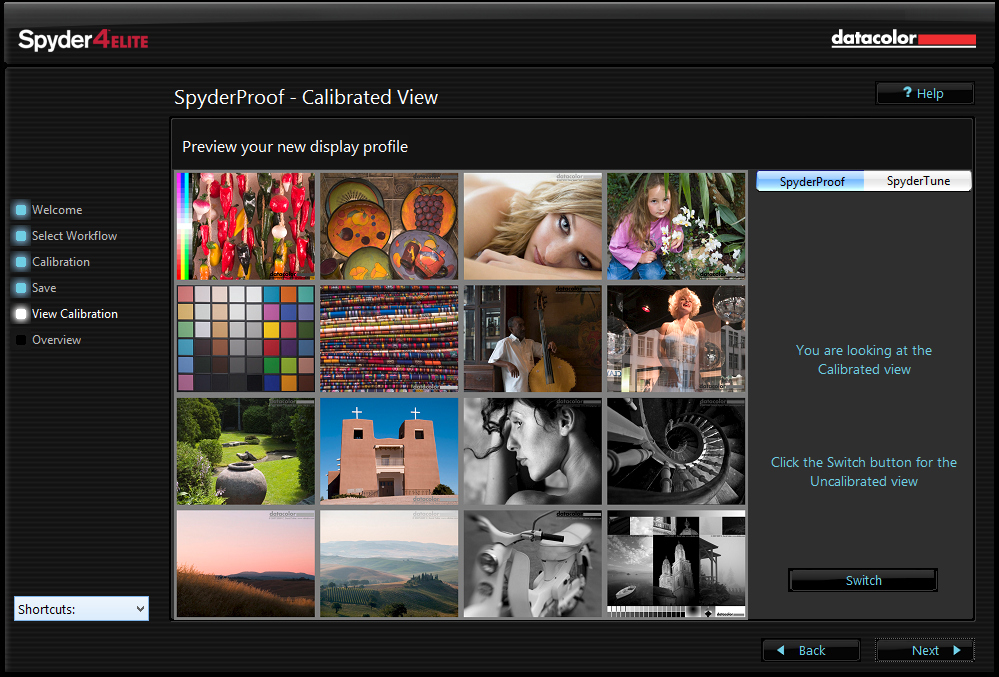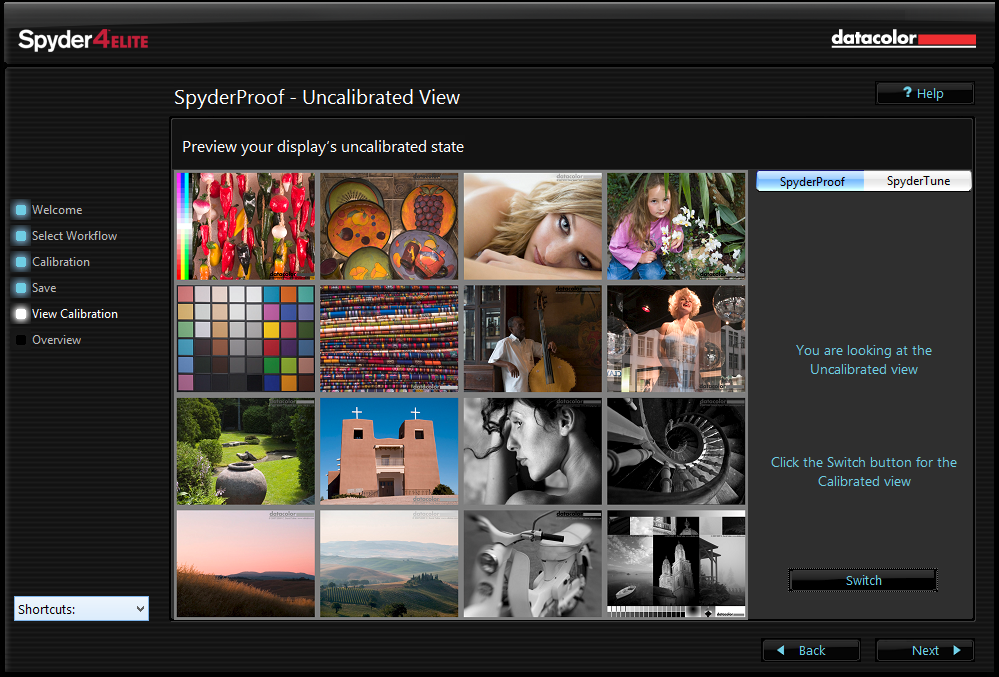Display Calibration 101: Step-By-Step With Datacolor's Spyder4Elite
In every monitor review, we recommend that enthusiasts calibrate their screens. The benefits are many, but how can achieve this without spending thousands of dollars on exotic gear? Today, we’ll show you how, and for less than the price of your monitor!
Spyder4Elite How-To: Overview
Now you should see patterns being displayed underneath the Spyder4 sensor. Unless you picked the Native brightness option on the Choose Settings screen, the calibration will pause somewhere towards the beginning of the process, and you’ll be asked to adjust your monitor’s brightness control until it reaches within four percent of your chosen brightness level.
The Target brightness setting is displayed in the upper right-hand corner, directly above the Current reading. If the current reading is higher than the target setting, lower the brightness control on your monitor. Alternatively, if the current level is lower than the target, raise the brightness.
After making an adjustment, click Update and check the new current reading against the target. If necessary, repeat this process until you come as close to the target setting as your monitor’s brightness control will allow. When done, click Next to continue the calibration process.
When the status bar has filled up and the screen reads Measuring Completed, you can remove the Spyder4 senor from the screen and click Finish.
Save
Now that the calibration process is complete, you can choose to name and save your calibrated monitor profile, as well as set up regular recalibration reminders.
When you're finished, click Save and then Next.
Get Tom's Hardware's best news and in-depth reviews, straight to your inbox.
View Calibration: SpyderProof
With your work saved, you can compare your monitor’s calibrated and uncalibrated state using the SpyderProof utility. The Switch button in the lower right-hand side of the Spyder4 screen changes between calibrated and uncalibrated modes.
The checkerboard of images provides a good cross-section of typical content. The difference in white balance can be easily seen in the four black and white pics in the lower right.
View Calibration: SpyderTune
The SpyderTune button in the upper right-hand corner switches between the SpyderProof and SpyderTune utilities.
In SpyderTune, you can tweak the white point, gamma, and brightness using on-screen sliders to the right of the checkerboard demo. You can immediately see the effect of these adjustments on the output. If you don’t care for any of you own adjustments, simply click Reset to go back to the calibrated settings. If you do want to commit any changes, just click Save.
When done making any post-calibration adjustments, click Next.
Current page: Spyder4Elite How-To: Overview
Prev Page Spyder4Elite How-To: Setting Up Next Page Spyder4Elite How-To: Wrapping Up
Christian Eberle is a Contributing Editor for Tom's Hardware US. He's a veteran reviewer of A/V equipment, specializing in monitors. Christian began his obsession with tech when he built his first PC in 1991, a 286 running DOS 3.0 at a blazing 12MHz. In 2006, he undertook training from the Imaging Science Foundation in video calibration and testing and thus started a passion for precise imaging that persists to this day. He is also a professional musician with a degree from the New England Conservatory as a classical bassoonist which he used to good effect as a performer with the West Point Army Band from 1987 to 2013. He enjoys watching movies and listening to high-end audio in his custom-built home theater and can be seen riding trails near his home on a race-ready ICE VTX recumbent trike. Christian enjoys the endless summer in Florida where he lives with his wife and Chihuahua and plays with orchestras around the state.
-
Someone Somewhere I've been doing this for years.Reply
However, I wouldn't recommend Colorvision - their support for open source software is pitiful.
It would be nice to have the option to calibrate the monitor instead of just using colour profiles though. It can get irritating to run the same test on multiple OSs or computers attached to the same monitor. -
envy14tpe Thank you so much for doing this article. I think calibrating a monitor (at home) is very important for accuracy.Reply
I use the Spyder Express 4 and love the results. There are 3 models of the Spyder 4 and buyers need to choose which is best for their use.
Would it be possible to make the images a larger file so people can see the difference more clearly? -
daglesj I have a Spyder 3 Pro.Reply
Great device when you first unbox it, then not so good when you find the colours and visuals look far worse after you finish with odd tinges and hues.
Then you read up and find the the devices are not actually calibrated and set properly when they leave the factory.
Pretty useless. I wouldn't buy another spyder. Look elsewhere for proper results. -
Traciatim I've been looking at picking up a calibration tool set for a while so I liked reading this article. My question though is that I want to use my setup to calibrate TV's for friends, Monitors, Laptops, multi monitor setups, TV's with PCs and Multiple other devices attached . . . I was looking at getting the Spyder4 Elite and the TV HD upgrade but it seems like if I calibrate a TV with a PC attached using the TV HD version and then try to do the PC with the software then is that going to mess up the previous settings?Reply
If anyone has any experience with these tools in multi-use and multi-display scenarios or has a better option on what tools to get I would really appreciate any info.
-
WyomingKnott "All modern fixed-pixel displays create images in RGB format." Sharp states that their Aquos line has a yellow sub-pixel. It might be interesting to compare one of their TVs to a similar RGB panel.Reply -
Someone Somewhere None of the connections allow it to receive data with a yellow channel though, so it's all interpolated in the display.Reply -
ddpruitt Great article, I always try to do this with monitors and displays. Most are set up so horribly out of the box and people always use what feels good instead of what's right. I have never used a color calibrator because there's so little factual information. I'll probably ending getting one of these now.Reply -
ojas I wish you could cover some free/open source software, $249 is still a bit much for some like me...plus exchange rate is getting painful these days :(Reply






